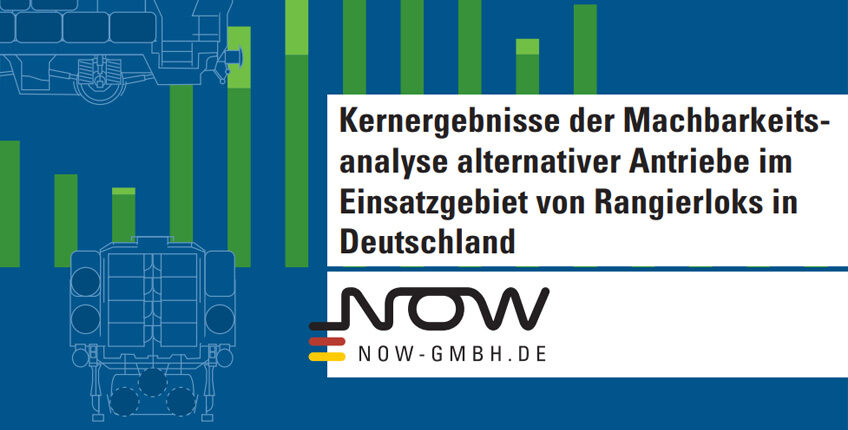Commissioned by NOW GmbH, the Institute of Vehicle Concepts (DLR) examined the feasibility and potentials of alternative drives in the application area of shunting locomotives in Germany.
With the study: ‘Core results of the feasibility analysis of alternative drives in the application area of shunting locomotives in Germany’, NOW GmbH is publishing a study that considers alternative drive concepts for shunting locomotives. The alternative drives concepts examined comprised the following: battery drive (without overhead line connection), fuel cell hybrid, hydrogen combustion engine, bimode battery-overhead line hybrid as well as bimode fuel cell-overhead line hybrid. A three-axle and a bogie shunting locomotive were used as representative vehicles.
The study was able to demonstrate that alternative drives for shunting locomotives are technically feasible for three different scenarios with characteristic day profiles under certain conditions. The technical analyses were accompanied by a systematic survey of railway companies. The results show that in addition to the changing trailer loads, the range of applications of shunting locomotives is also very diverse in terms of mileage, load profiles and operating time.
With regard to use in port areas, there is great interest in using locomotives with alternative drives, although at present there are hardly any marketable products. Because of the very long service life of locomotives, demand relates to both new vehicles as well as retrofit solutions.
Study on hydrogen fuel cell shunting locomotives at Duisport Rail
The study is not the first to showcase valuable findings in this subject area. In the study: ‘Duisport hydrogen shunting locomotives’, also available here, you can find statements that complement the NOW study, like for example, in relation to the H2 FC hybrid and bimode H2 FC hybrid drive systems that were examined.


